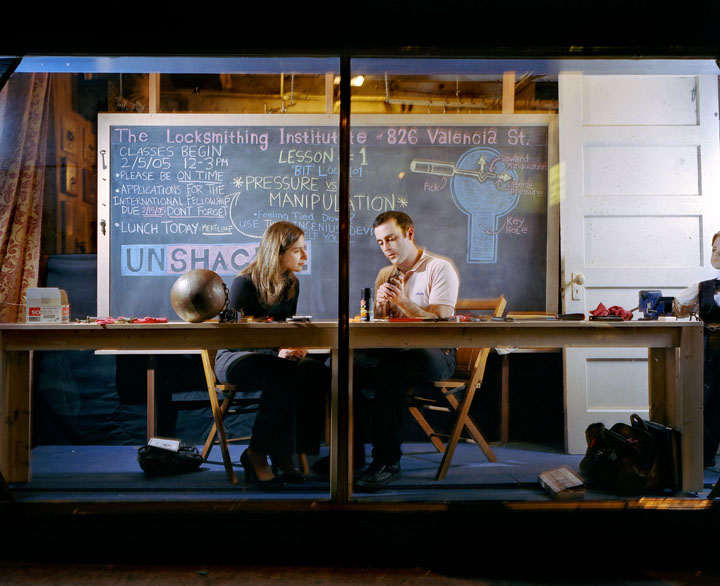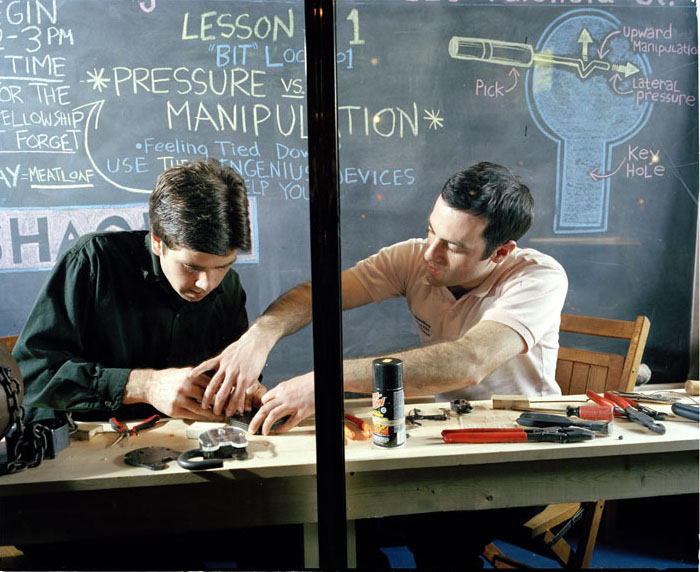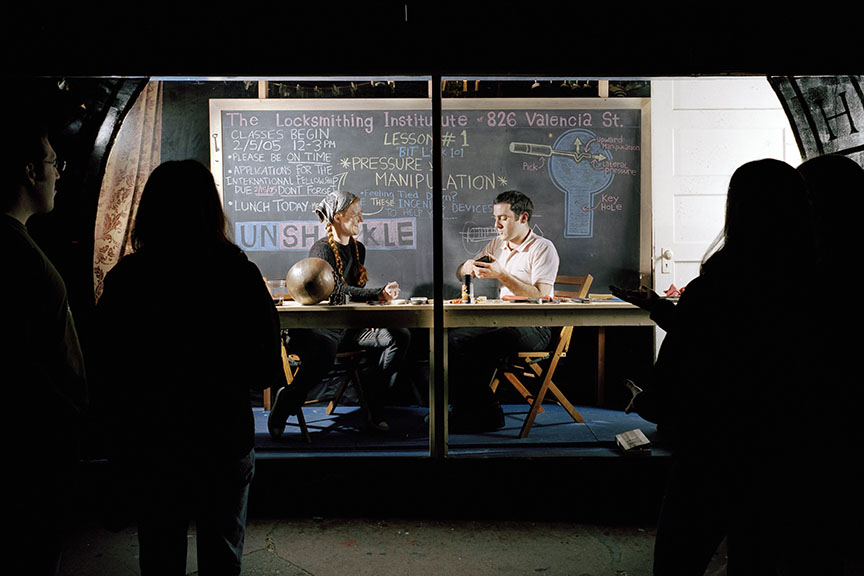
The Locksmithing Institute of 826 Valencia Street, San Francisco, CA, February, 2005
Every Saturday of February and March of 2005 I taught anyone interested how to pick a lock. The piece was installed in the window display of 826 Valencia Street (a pirate themed writing center for school age childern) in San Francisco. At the end of the lesson each student was locked into a ball and chain leg shackle and had to pick their way to freedom in order to exit the classroom-window display. Special thanks to Chris Woodcock for taking photographs of the event. Full lesson plan below:
The Locksmithing Institute of 826 Valencia Street
Lesson #1: Unshackle
The earliest English derivation of the word “pressure” according to the Oxford English Dictionary) dates to 1382 and was originally defined as: “The action of pressing painfully upon the sensations or feelings; the condition of being painfully pressed in body or mind; the weight or burden of pain, grief, trouble, poverty, etc.; affliction, oppression.”
In 1801 “manipulation” was defined as: “The action or an act of manipulating something; handling; dexterity. Also (occas.): the making of hand motions.”
And then in 1828 “manipulation” came to be defined as: “The action or an act of managing or directing a person, etc., esp. in a skillful manner; the exercise of subtle, underhand, or devious influence or control over a person, organization, etc.; interference, tampering.”
It is not without coincidence that pressure and manipulation are implored to convince a lock to open. If these are the normal tactics used to defeat a lock it implies that a lock is a shielded device which is being forced to open by someone who is pressed by pain and who lacks the ability to influence that which surrounds them by the content of their character and thusly must coerce their surroundings into submission through manipulation. This scenario places a lock into its most commonly viewed position as a device that deflects energy. However a lock does not in fact inhibit the path of an incorrect key or a persons attempt to pick it. In actuality it takes that energy, absorbs it, spreads it out and, thusly, renders it impotent. Indeed they are passive vessels for the absorption of energy. Locks are a creation of people and people are, of course, clever but hardly original. We have survived by observing that which surrounds us and adapting those disparate materials and ideas together to serve a new purpose. The question then becomes: What was it that people observed when they were first inspired to create a lock? I submit that it was in fact: themselves. Through pressure and manipulation we attempt to force ourselves into an understanding of the world that surrounds us. Like attempting to pick a lock, we try to “figure it out.” What I have found in the two years that I have been locksmithing is that locks do not confine us to certain sections of space and deny our access to others. It would seem that only our perception is capable of achieving this incredible feat of shackling. I suppose the point is (and I am certainly not the first to discover this) that we are only captive if we choose to perceive ourselves as captive. Considering these things one might ask if there is yet another way to pick a lock if not thru pressure and manipulation. The best answer I have at this point is that if one views a lock as mirror of themselves then the desire to pick the lock will dissipate and whatever it was that was inhibiting ones progress will suddenly disappear as well (though I do admit that this does not help you get into the room were you have locked your keys inside of.) A comedian once mused: The bad news is that there is no key to unlock the door to the universe. The good news is that the door was never locked.

